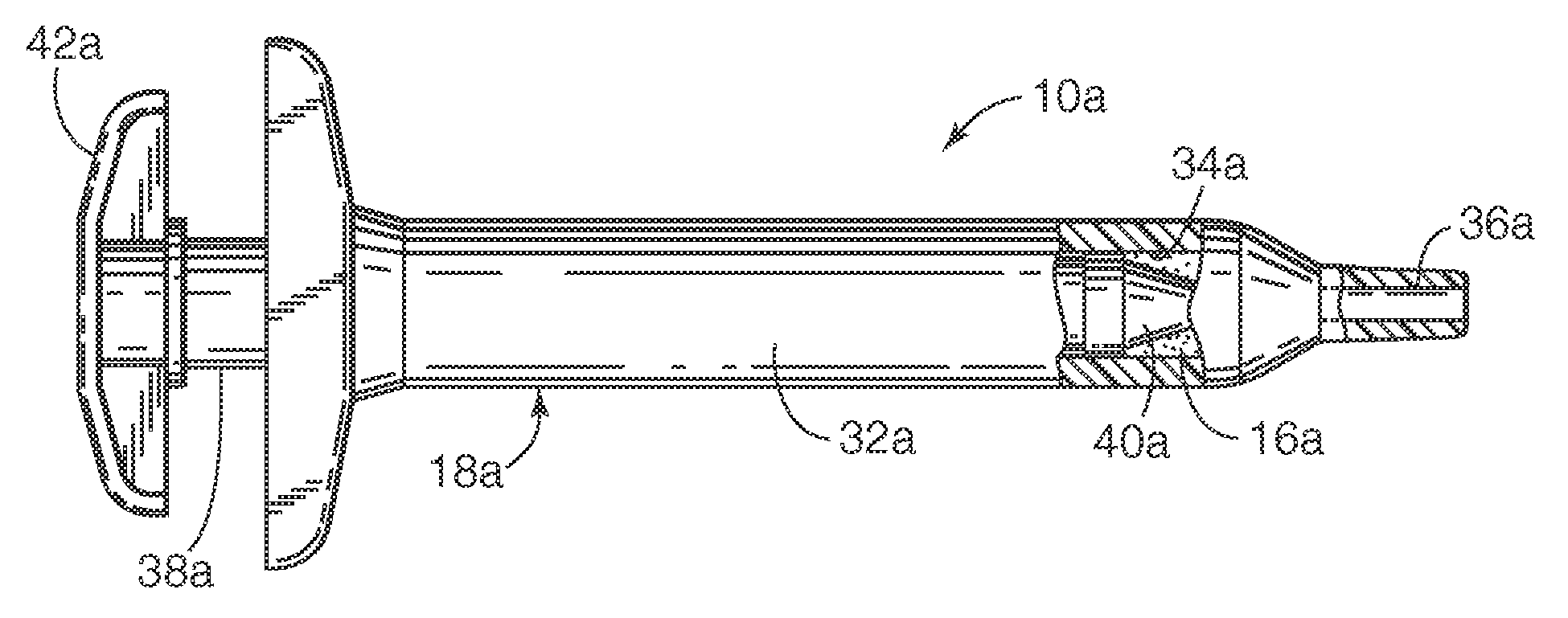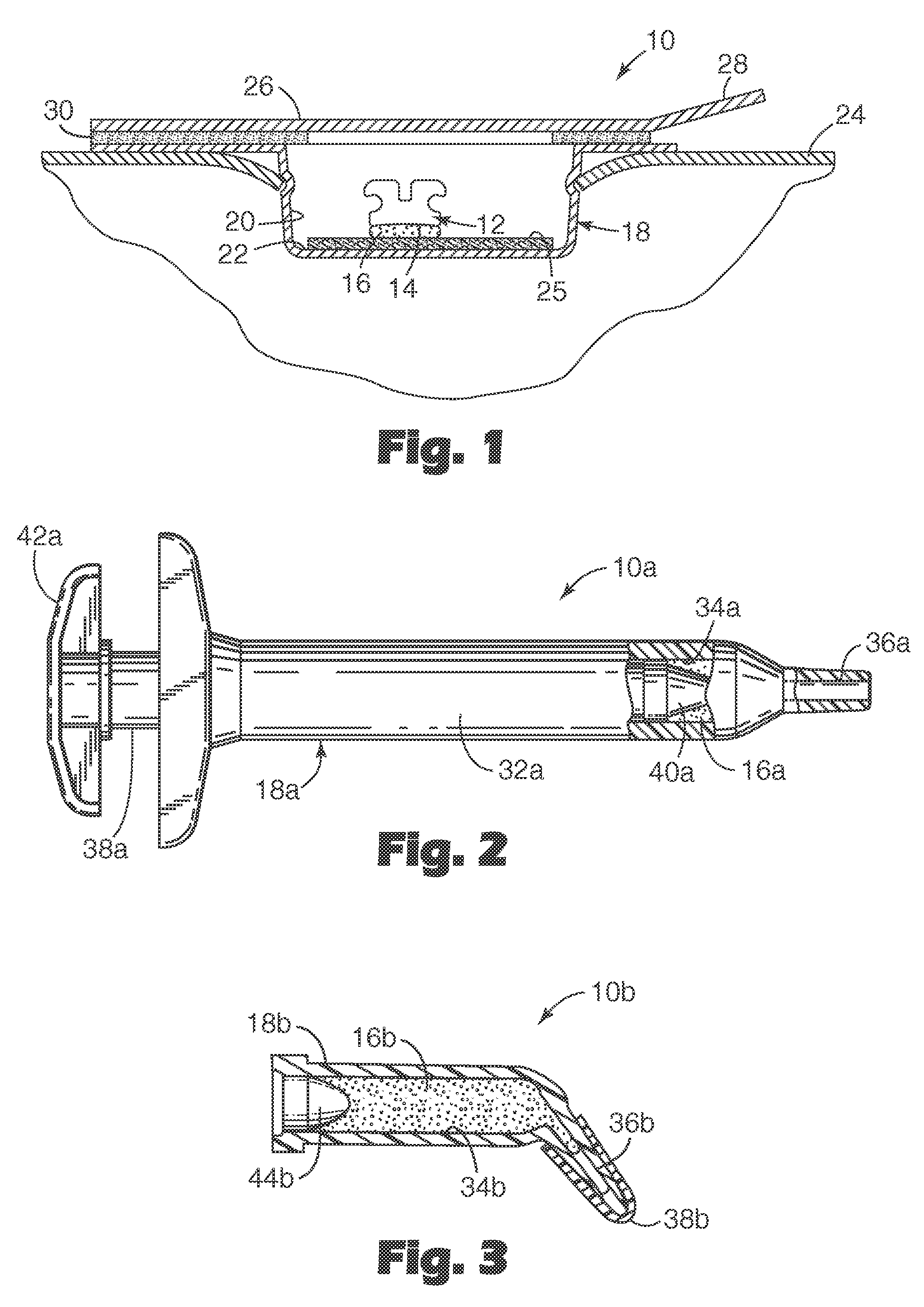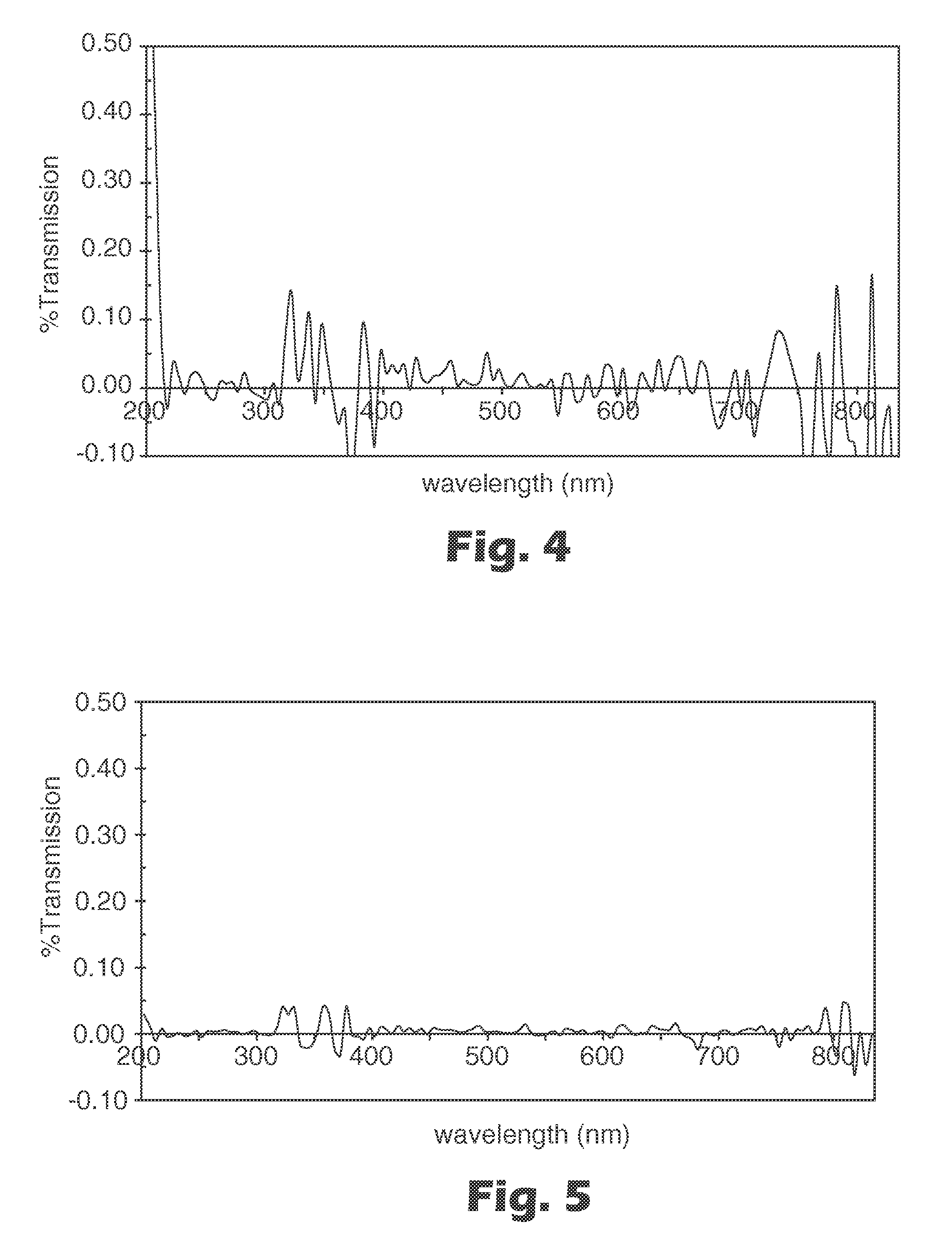Containers for photocurable materials
a technology of photocurable materials and containers, applied in the field of materials containers, can solve the problems of reducing the bond strength of the resultant bonded appliance, reducing the use of adhesive precoated orthodontic appliances, and rendering the adhesive more difficult to see, and achieve excellent protection
- Summary
- Abstract
- Description
- Claims
- Application Information
AI Technical Summary
Benefits of technology
Problems solved by technology
Method used
Image
Examples
examples
[0073]Sample articles were constructed according to the exemplary article 10 shown in FIG. 1. Three types of containers made of a mixture of polymer and metallic particles were injection molded. The wall thickness at the bottom of the container was 0.05 in. (1.3 mm) and was 0.035 in. (0.9 mm) in areas of the flange and the sidewall surrounding the well. The compositions of the three types of containers are set out in Table I.
TABLE IContainer “A”Container “B”Container “C”1.6% powder3.0% powder5.6% powderSodium0.080.160.30Aluminosulphosilicate(ultramarine blue)Aluminum Powder0.420.821.52Mica / Titanium1.062.043.80DioxideSalt of Stearic Acid0.210.410.76(zinc salt)Polypropylene98.2296.5793.62
[0074]A section of foam material was placed in the bottom of each well of each container. The foam was made from sections that were cut from Minicel brand foam no. M200, 0.030 inch (0.76 mm) thick.
[0075]An adhesive precoated orthodontic bracket was placed in each container. The brackets were twin meta...
example i
[0079]A number of the orthodontic brackets identified above were coated with a layer of adhesive according to the formulation identified as Adhesive “L” or Adhesive “M” in Table II. The brackets and the adhesive were then placed in each of the three containers identified in Table I. A lidding material was placed over the well of each container to serve as a cover. The lidding was made of a laminate that included a layer of polyester film (12 micron thickness), a layer of adhesive, a layer of aluminum foil (25 micron thickness) and an acrylic-based heat seal coating. The containers were then subjected to continuous fluorescent light (30 watts) at a distance of 18 inches (46 cm).
[0080]For comparison purposes, a number of the “A” containers with the same lidding, brackets and adhesive as mentioned above were kept in dark storage.
[0081]To determine the photostability of the adhesive, the red color of the adhesive was measured using a spectrometer (no. EPP2000C, from StellarNet, Inc.) be...
example ii
[0084]A number of the orthodontic brackets mentioned above were coated with a layer of adhesive “L” as identified in Table II. Those brackets with the adhesive were then placed in containers “A” identified in Table I. A lidding material was placed over the well of each container to serve as a cover. The lidding comprised a laminate that included a layer of oriented polyamide (25 micron thickness), a layer of adhesive, a layer of aluminum foil (60 micron thickness), a layer of adhesive, a layer of polyethyleneterephthalate (12 micron thickness), a primer and a modified polypropylene heat seal coating. Those containers were then stored in a dark oven at 40° C.
[0085]A quantity of adhesive “N” from Table II was separated into sections approximately equal in size to the size of the adhesive on the base of the brackets in the preceding paragraph. Those sections of adhesive were then placed in the polypropylene control containers with 1% carbon black as described above.
[0086]A lidding mate...
PUM
| Property | Measurement | Unit |
|---|---|---|
| Fraction | aaaaa | aaaaa |
| Fraction | aaaaa | aaaaa |
| Size | aaaaa | aaaaa |
Abstract
Description
Claims
Application Information
 Login to View More
Login to View More - R&D
- Intellectual Property
- Life Sciences
- Materials
- Tech Scout
- Unparalleled Data Quality
- Higher Quality Content
- 60% Fewer Hallucinations
Browse by: Latest US Patents, China's latest patents, Technical Efficacy Thesaurus, Application Domain, Technology Topic, Popular Technical Reports.
© 2025 PatSnap. All rights reserved.Legal|Privacy policy|Modern Slavery Act Transparency Statement|Sitemap|About US| Contact US: help@patsnap.com



